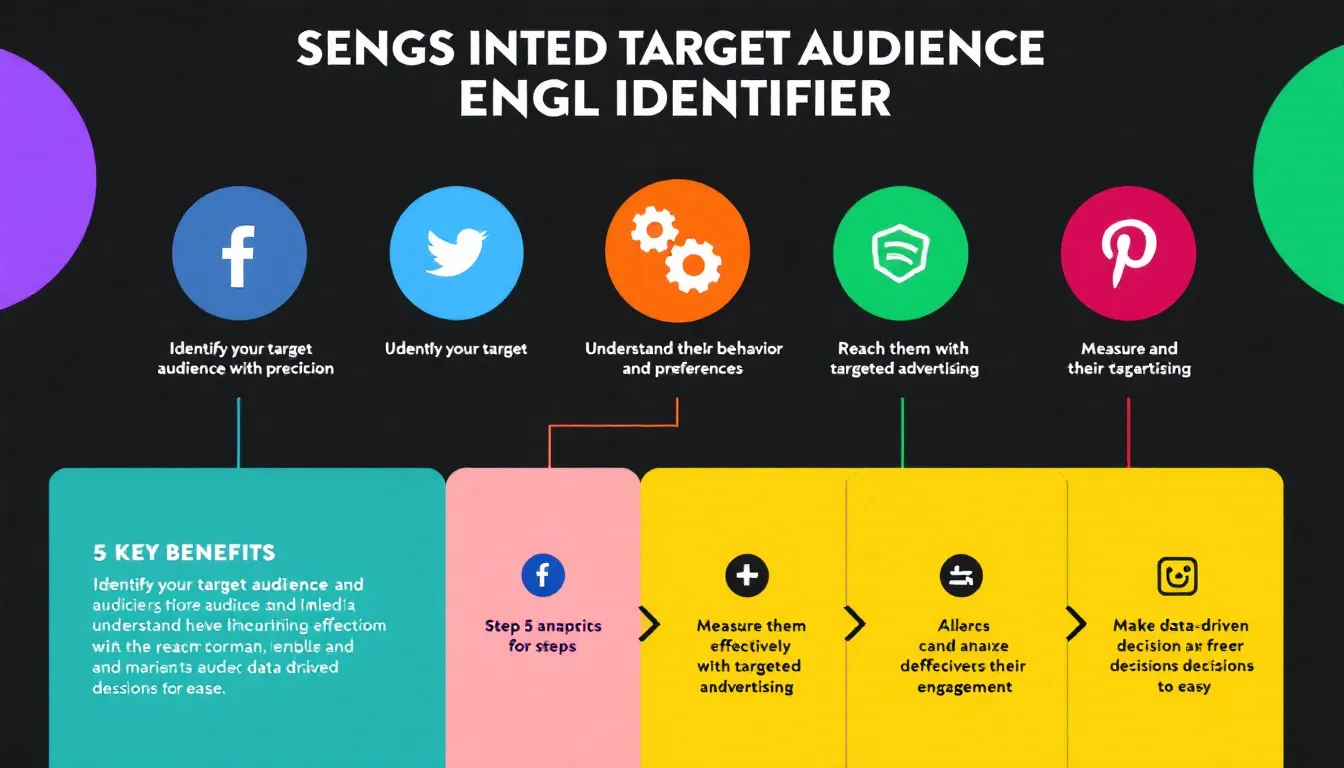Target Audience Identifier
Analyzing target audience...
Is this tool helpful?
How to Use the Tool Effectively
You can quickly identify your optimal social media target audience by providing a few key details. Here’s how to use the tool step-by-step:
- Main Topic or Product: Enter the central subject of your campaign. For example, try “Handcrafted leather wallets” or “Online coding bootcamp”. This helps the tool understand your core offering.
- Industry or Niche (Optional): Add more context by specifying your industry. You could use “Artisan accessories” or “Educational technology”. This fine-tunes the audience profile.
- Target Geographic Location (Optional): Indicate the region where your audience lives or where you want to focus, such as “Southeast Asia” or “Urban centers in Canada”. Geographic focus sharpens your targeting.
- Preferred Social Media Platforms (Optional): List platforms where you plan to engage your audience. Examples include “LinkedIn, Clubhouse, Reddit” or “Snapchat, Tumblr, Twitter”. This guides your platform-specific strategy.
- Submit Your Information: Click the Identify Target Audience button to get a detailed analysis tailored to your inputs.
Once submitted, the tool generates a comprehensive target audience report covering demographics, interests, behaviors, and platform preferences to help you craft relevant social media campaigns.
What Is the Social Media Target Audience Identifier and Why It Matters
The Social Media Target Audience Identifier helps you precisely define who your social media marketing should reach. Its purpose is to give you a clear picture of your ideal customer, so you can create focused content and campaigns that connect.
This tool improves your marketing by providing insights into your audience’s age, interests, behaviors, and preferred social media channels. Knowing this helps you spend your budget wisely, direct content effectively, and engage with the right people.
Key benefits include:
- Pinpointing the most responsive audience demographics
- Improving social media content relevance and timing
- Reducing wasted ad spend by avoiding irrelevant groups
- Increasing engagement and conversions through targeted messaging
- Helping you choose the best social media platforms for your brand
Practical Uses for the Target Audience Identifier
This tool works well for marketers, business owners, and content creators across many fields who want to maximize social media impact. Here are a few real-world applications:
1. Launching a New Product
When preparing to launch, you can input your product details to uncover who is most likely to buy. For example, a company rolling out a line of premium coffee blends might specify:
- Topic: Specialty coffee blends
- Industry Niche: Gourmet food and beverages
- Geographic Location: Europe
- Platform Preferences: Instagram, Facebook, YouTube
The tool could show that your main audience is adults aged 25-45, passionate about artisanal food, who engage heavily with recipe videos on YouTube and visual inspiration on Instagram. This helps you tailor content and ads effectively.
2. Refining Content Strategy for a Blog or Channel
If your focus is creating content, the tool guides you on topics and platforms likely to perform well. A lifestyle blog might input:
- Topic: Sustainable travel tips
- Industry Niche: Eco-tourism and travel
- Geographic Location: Global (English-speaking countries)
- Platform Preferences: Pinterest, Twitter, TikTok
You’ll discover audience traits like age range, key interests (environmental awareness, adventure), and preferred platforms, helping you optimize your content calendar and promotion techniques.
3. Nonprofit Campaigns and Fundraising
Nonprofits can use the tool to connect with supporters who care most about their cause. For a food security nonprofit targeting urban communities, you might input:
- Topic: Urban food sustainability
- Industry Niche: Community development and charity
- Geographic Location: Major U.S. cities
- Platform Preferences: Facebook, Instagram, Twitter
The analysis gives you insights on engaged demographics, interest clusters, and behavior patterns, allowing you to design compelling campaigns that drive donations and volunteer participation.
How Understanding Target Audiences Transforms Your Social Media Marketing
Efficient social media marketing depends on knowing exactly who your ideal audience is and what motivates them. This tool enables you to:
- Identify demographic details including age, gender, location, and income level
- Understand psychographic factors like interests, values, and lifestyle choices
- Recognize behavioral patterns such as online habits and purchasing behaviors
- Discover preferred social media platforms and usage trends
With these insights, you can align your social media messages, ad targeting, and content formats to match your audience’s expectations, boosting engagement and conversions.
Overcoming Common Social Media Marketing Challenges
Reducing Wasted Ad Spend
Instead of targeting overly broad groups, this tool sharpens your focus, reducing spending on uninterested users. More precise targeting increases your ROI.
Increasing Engagement Rates
By tailoring your content to your audience’s interests and habits, you’ll generate more likes, shares, and comments on your posts, strengthening your community.
Choosing the Right Social Media Platforms
The tool helps you avoid spreading effort thinly across too many platforms by revealing which channels your audience favors. Focus your time and budget where it matters most.
Frequently Asked Questions (FAQ)
How often should I use this Target Audience Identifier?
You should use it regularly, at least every few months, or before major campaigns or product launches, to stay current with shifts in audience preferences and behaviors.
Can this tool help me discover new customer segments?
Yes, by testing different inputs, you can uncover untapped markets or niche groups interested in your product or service, guiding expansion and diversification strategies.
How does the tool decide which social platforms suit my audience best?
It analyzes trends in social media activity related to your topic and demographics, highlighting platforms where your target audience is most active and engaged.
Important Disclaimer
The calculations, results, and content provided by our tools are not guaranteed to be accurate, complete, or reliable. Users are responsible for verifying and interpreting the results. Our content and tools may contain errors, biases, or inconsistencies. Do not enter personal data, sensitive information, or personally identifiable information in our web forms or tools. Such data entry violates our terms of service and may result in unauthorized disclosure to third parties. We reserve the right to save inputs and outputs from our tools for the purposes of error debugging, bias identification, and performance improvement. External companies providing AI models used in our tools may also save and process data in accordance with their own policies. By using our tools, you consent to this data collection and processing. We reserve the right to limit the usage of our tools based on current usability factors.







